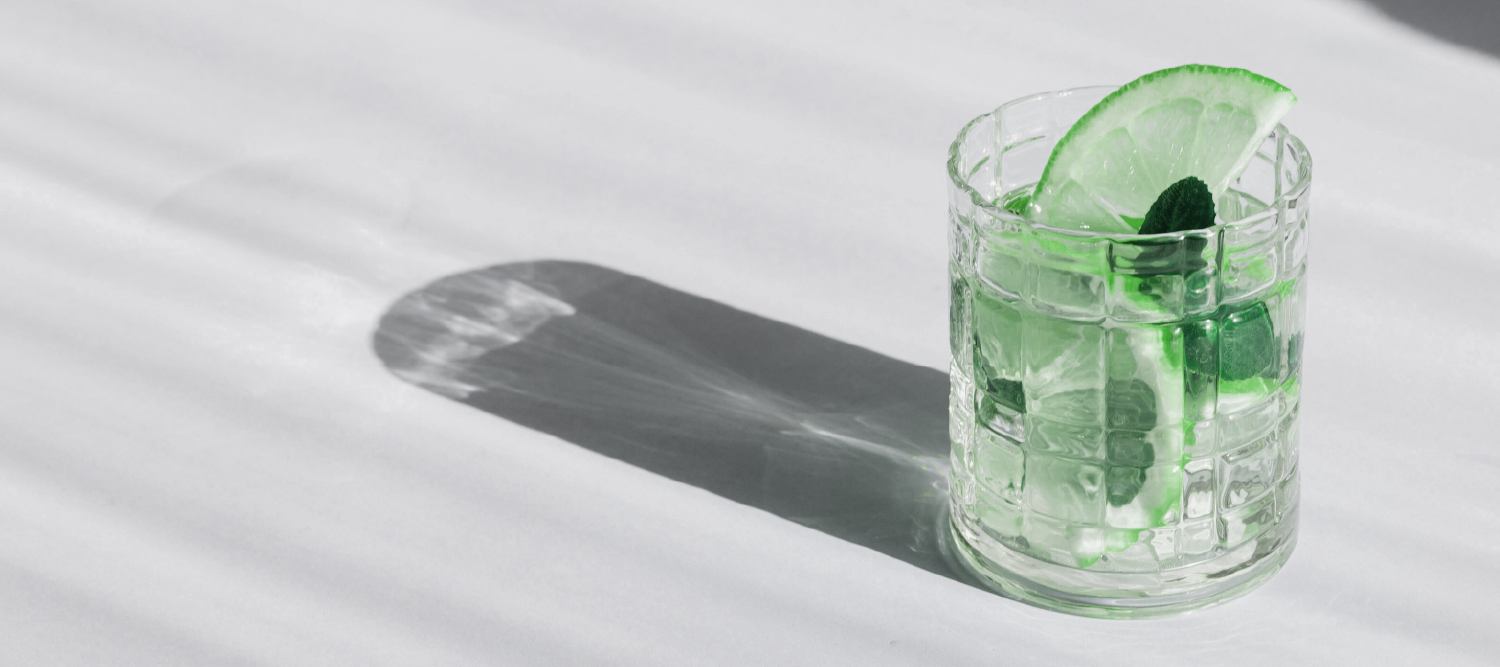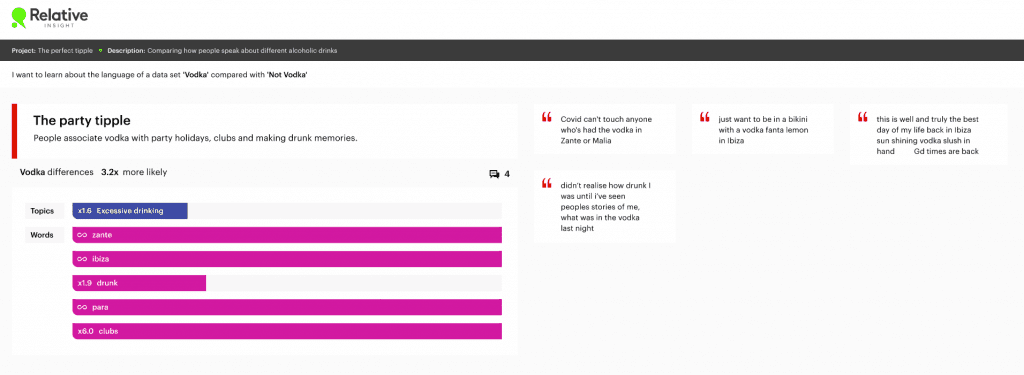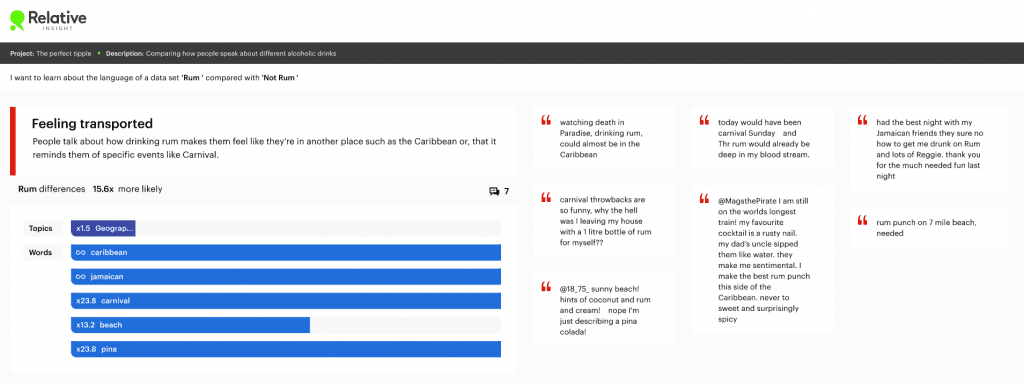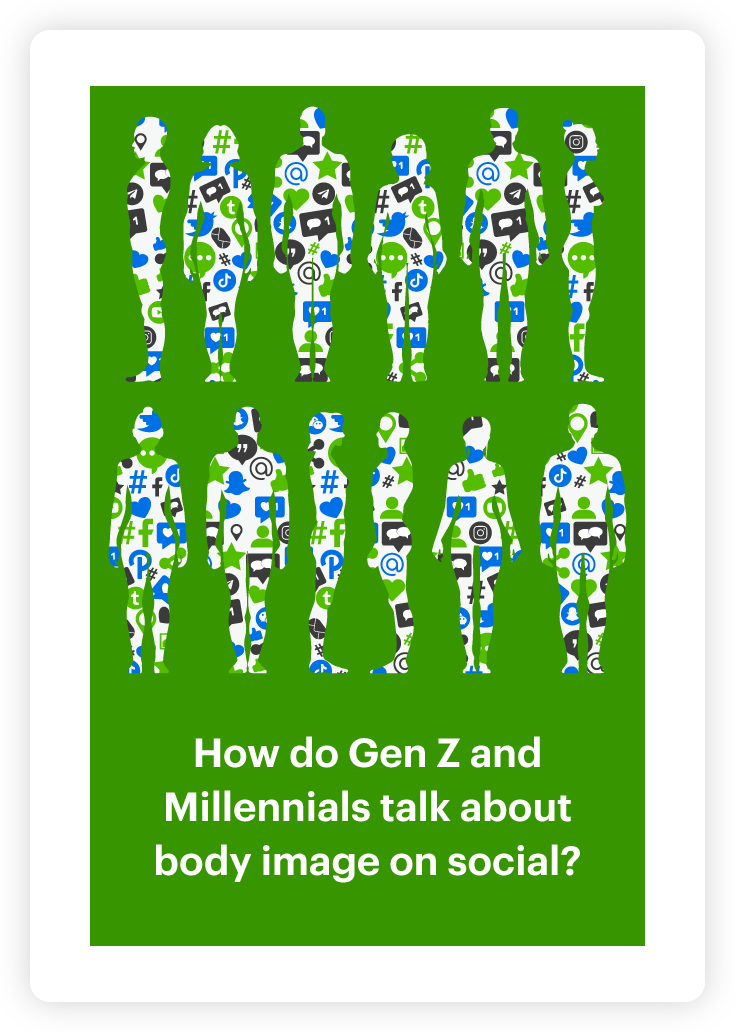The perfect tipple: tracking alcohol trends through social media text analysis

From early ancient civilizations to modern-day society, alcohol has permeated through history, leaving a lasting mark on many cultures. Today, alcohol brands are using Relative Insight to track alcohol trends, analyze customer opinions and understand consumption behaviors. Through text analytics, brands are uncovering what their customers want from their products and how they like to experience them, enabling brands to align their marketing and product development efforts accordingly.
With this in mind, we wanted to explore how people are speaking about various spirits. How do people’s experiences differ based on the alcoholic drink in question? And what can brands learn from this?
To find out, we did a bit of Twitter text analysis. First, we pulled tweets from the UK over a two-month period that specifically mentioned whiskey, vodka, gin, tequila and rum. We then uploaded this social data into Relative Insight to reveal the unique elements of the public discourse around each spirit.
Here’s what we found…
Vodka
People discussing vodka on Twitter are 5x more likely to refer to their mates. This is often in a nostalgic context, where users discuss memories of their youth. The use of the word were emphasizes a nod to the past, indicating that consumers are reminiscing about times gone by and potential alcohol trends that have now passed.
In a similar vein, it seems like vodka makes the perfect party tipple. Our analysis found that people on Twitter are 3.2x more likely to associate their experiences drinking vodka with party holidays such as Zante and Ibiza, as well as clubs and being drunk. Or as some regional accents might say, para. This is a key insight for brands, as consumers seem to associate vodka with fun times.

Gin
In contrast, people who discuss gin depict a much more relaxed and casual experience. Our comparison revealed that people who talk about gin are infinitely more likely to mention the hard work that’s earned them an alcoholic beverage. Another unique alcohol trend that we found is that gin drinkers use the word face mask infinitely more. This suggests that gin fans are partial to a pamper night, correlating gin with self-care and their wellness routine.

There’s nothing quite like a gin and tonic on a warm summer’s day. And Twitter users seems to agree! In comparison to social conversations of other spirits, gin lovers are 2.7x as likely to talk about enjoying a glass of gin in their garden, while also commenting on the weather. People clearly associate gin with relaxing in the comfort of their own homes, refreshing after a day of work.
Whiskey
The thought of whiskey summons images of smokey rooms, dimmed lights and cigars – a word that is 19.2x more likely to appear in the conversations of whiskey drinkers.
However, what’s fascinating is the use of gendered pronouns which allude to the cliched idea that whiskey is in fact a man’s drink. Masculine pronouns such as he and his were 3x more prevalent among whiskey drinkers than other spirits. Similarly, within the whiskey data set, masculine pronouns were 2.9x more common than female ones. Tweets also featured stories of my old man, grandad, and other men enjoying whiskey.

But female whiskey drinkers are an alcohol trend that is on the rise. In comparison to 2010, British women now drink 40 million more glasses of whisky a year. Clearly, there is a huge market for brands to tap into.
Rum
In comparison to other spirits, people talking about rum are 15.6x more likely to refer to exotic places such as the Caribbean, Jamaica and the beach. This suggests that when drinking rum, people feel transported to places far away and envision themselves relaxing in the tropics.
Furthermore, the word carnival also appears frequently throughout the social discourse of rum drinkers. Notting Hill Carnival is one of the world’s largest street festivals which takes place annually in London and celebrates Caribbean and Black British Culture. This emphasises the fact that rum has historical, culturally significant roots which tie it closely to events such as Carnival.

Tequila
Finally, tequila. The shot that can make or break a night.
Our analysis revealed that people on Twitter amusingly discuss both sides of the coin. On one hand, people associate tequila with fun weekend plans, often speaking in the future tense. For instance, using phrases such as this weekend and talking about the many shots of tequila they’ll be consuming.
However, fast forward to the next day and the story is entirely different. Twitter users discussing tequila are 3.6x more likely to talk about their hangover, using the words sick and regrets throughout their tweets. But while tequila is associated with a wild night out and people may temporarily wake up with the dreaded fear, it’s highly likely they’ll be back for more.

Why tracking alcohol trends matters
For alcohol brands, in-depth consumer research into consumption habits is crucial in order to stay competitive. Conducting Twitter text analysis using Relative Insight can help you track conversations about people’s drinking habits and alcohol trends, enabling you to align your brand to consumer trends. Using natural language processing, brands can obtain valuable insights that support an improved understanding of customers and the identification of opportunities for growth.
